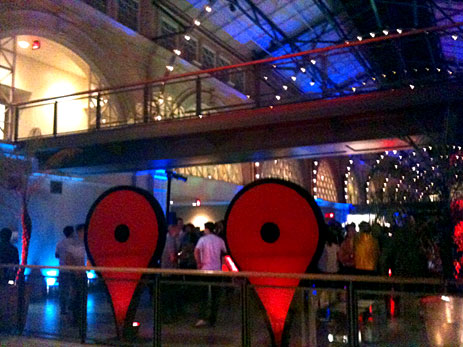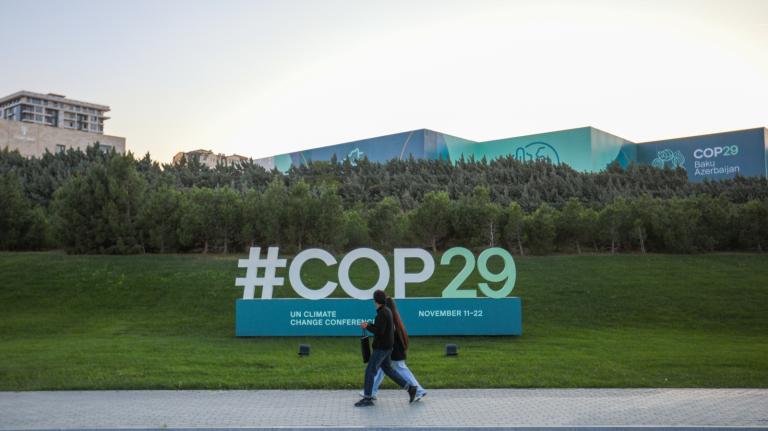 Tonight a certain segment of young, 20-something San Franciscans was partying like it was 1999. That’s the last time this dot-com-boom survivor can remember a tech company throwing a party for 700 people with an open cocktail bar (no carefully rationed, donated wine here!), fancy canapés, and a DJ. But maybe I’ve just been off the invite list since I switched to food.
Tonight a certain segment of young, 20-something San Franciscans was partying like it was 1999. That’s the last time this dot-com-boom survivor can remember a tech company throwing a party for 700 people with an open cocktail bar (no carefully rationed, donated wine here!), fancy canapés, and a DJ. But maybe I’ve just been off the invite list since I switched to food.
The occasion was a mysterious Google announcement, no details given. The blogosphere speculated it had something with fashion, or at least shopping. Just like in the old days, there were attractive young women in fancy frocks and awkward young men in t-shirts sporting coding in-jokes, Pixar characters, or URLs for startups. The only clue given was the “Location, location, location” phrase of the RSVP website — a Google form, natch — and the people-sized, red-apostrophe demo stations suggested something to do with Google Maps.
I thought it must have to do with food, given that a) they’d invited me and b) the venue was San Francisco’s Ferry Building, also known as Mecca for epicureans (and Ethicureans) far and wide. The food was provided by a top-notch caterer, Paula Le Duc, which holds the exclusive contract for the Ferry Building, and was all “local, sustainable, yah-yah-yah” as an unnerved spokesperson told me when I snuck into the kitchen. So: sliders made with Niman Ranch beef and fresh ketchup, crostini with Bellwether Farms ricotta on Acme bread, and so forth.
Turns out the new Google service is called Hotpot and it’s user-generated micro-reviews of restaurants (hot spot/claypot — get it?). Think Yelp! mashed up with Netflix star ratings and a layer of social networking. You can rate venues based on a quick, thumbs-up/down for four criteria (food, service, ambiance, and value), then share those ratings with the world (not optional) or your friends (you have to tell Google who they are).
Once you rate something in Hotpot, your mini-review and rating show up when others search for it in Google Maps, and is integrated with Yelp, Citysearch, and other reviews. Google will recommend restaurants for you based on the ones you like. As with Netflix and Amazon.com, say, the more you rate, the better the recommendations supposedly become.
Now, I use just about every Google service and app there is, every day. I read all my email addresses through Gmail, administer a dozen Google Groups, edit Grist stories in Google docs, nerd out with personalized Google Maps, and so on. But I’ve poked around a bit tonight, and I don’t get the point of Hotpot. If I just want to find nearby restaurants quickly on the fly, I’ll use my Urbanspoon or Around Me apps. When traveling, I’m most likely to rely on the Eat Well Guide, because it tells me which restaurants try to source their vegetables and meat responsibly.
But for actual restaurant recommendations, I’ll ping friends who like the same kind of food I do and have similar price and service expectations. I’m not moved by knowing 75 random dudes gave Café Cool a thumbs-up. And OK, Hotpot is in its infancy — its listings presumably having been populated by Google employees and friends sworn to secrecy — but a quick search of my and surrounding neighborhoods indicated that almost all restaurants averaged four out of five stars. Not helpful.
Meanwhile, Facebook announced today that it was going to start offering integrated email, centralizing your Facebook messages and chats in one place.
Why are these guys so intent on competing with each other in the areas that they’ve already clearly staked out so well? Can’t they just sit down to dinner and come up with a way to work together to give us what we want — our Facebook friends’ favorite restaurants and shops, marked on a Google map that tells us how to get from place to place by bike or public transit?



